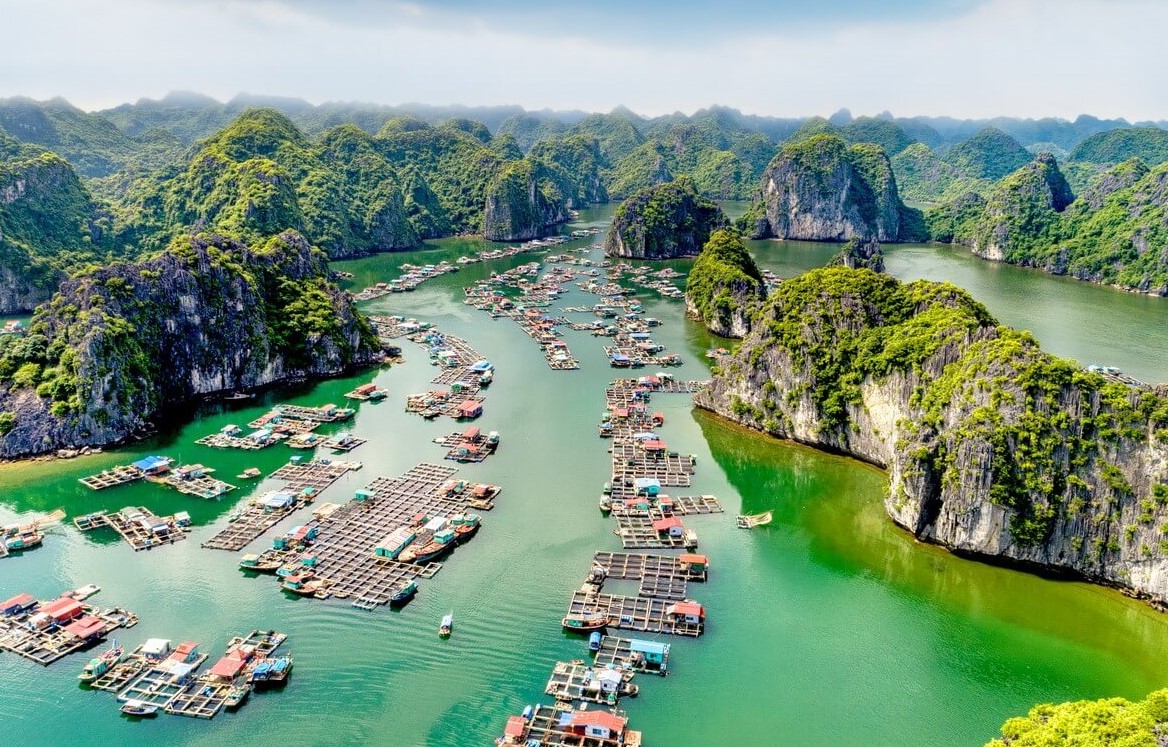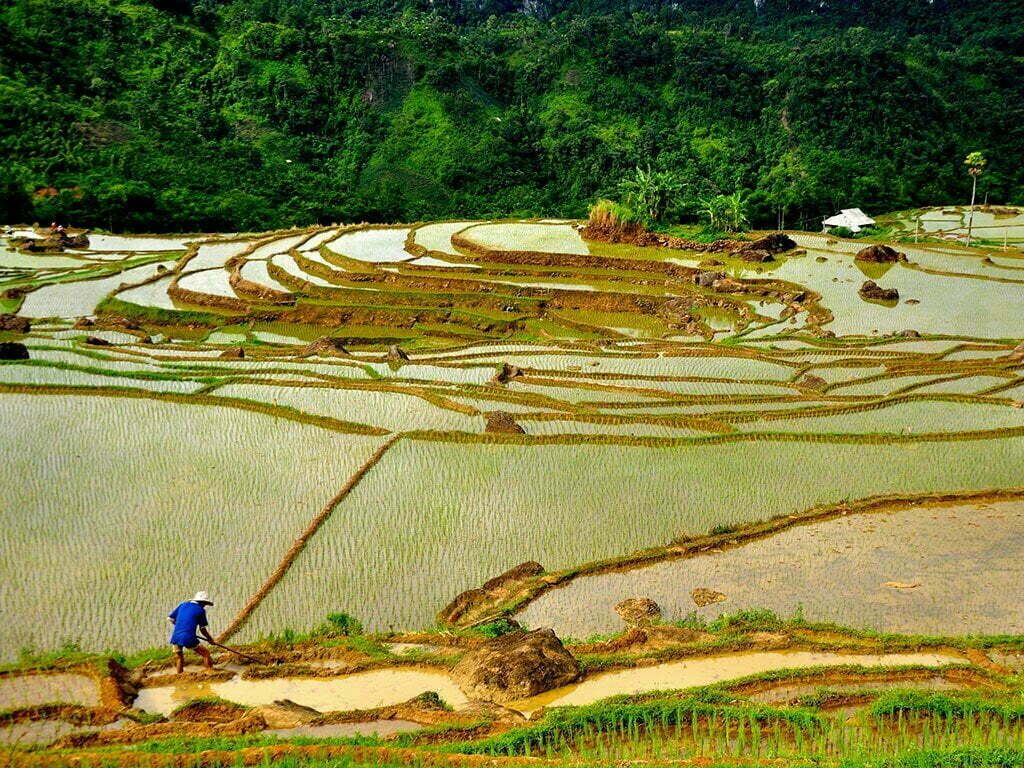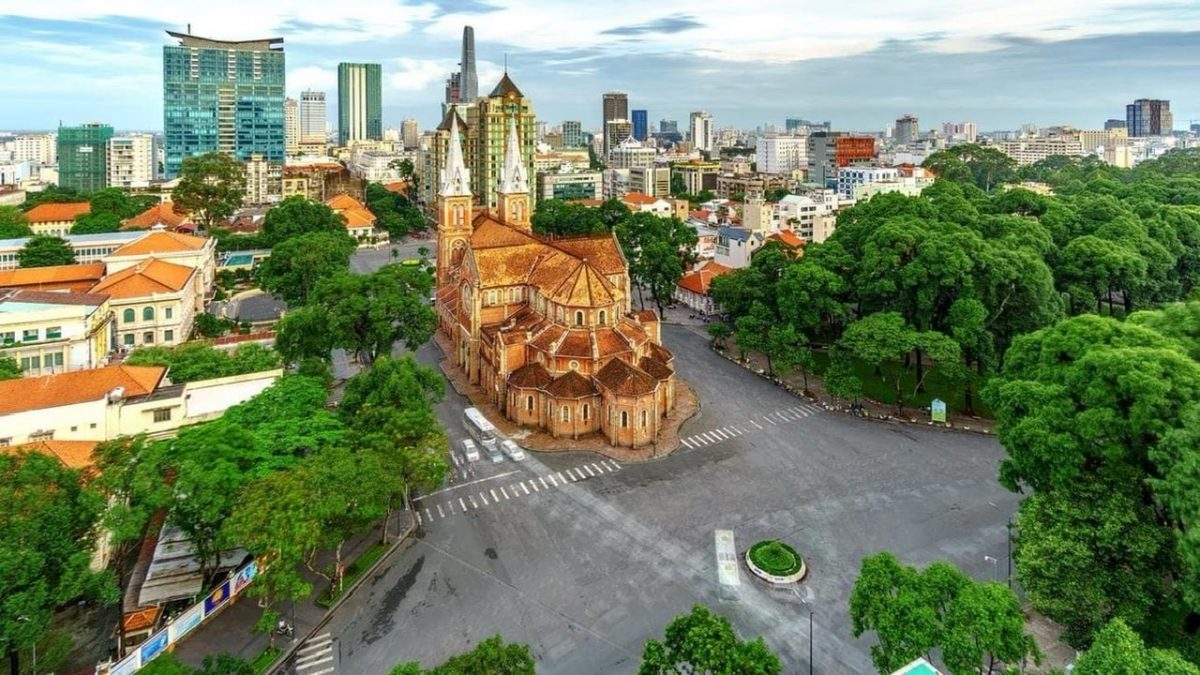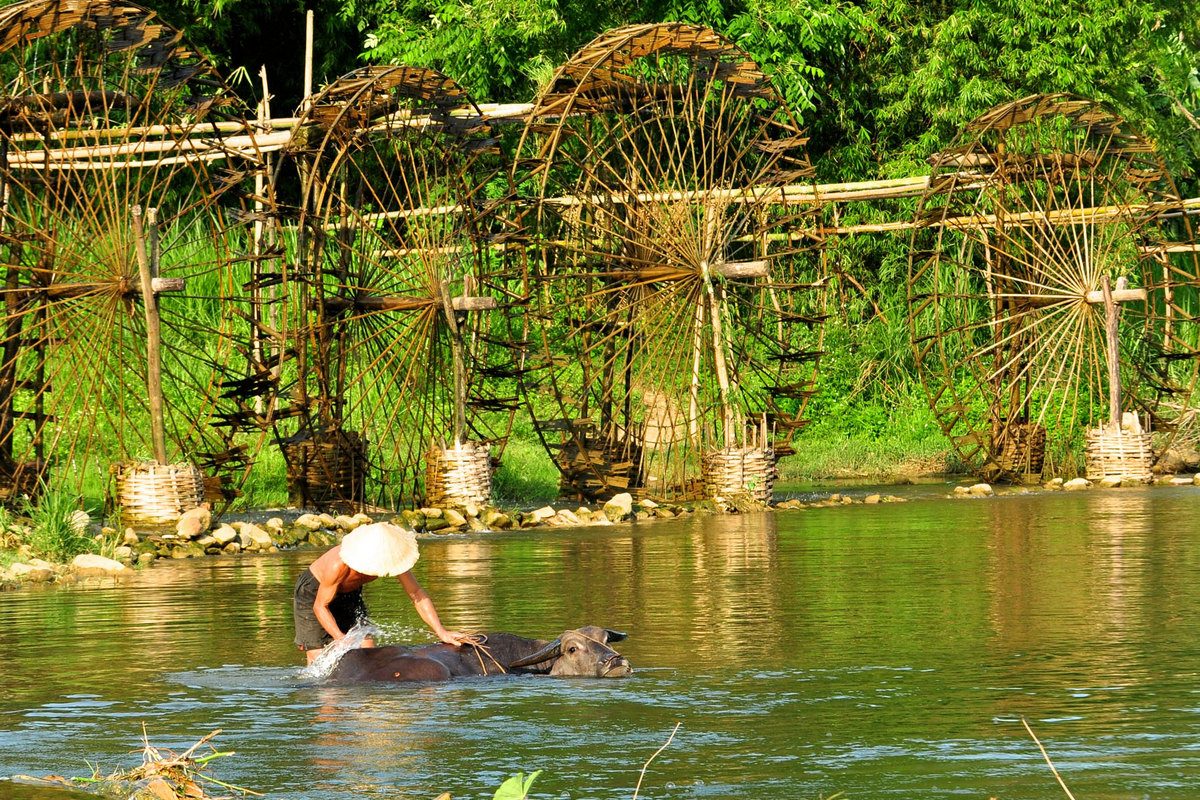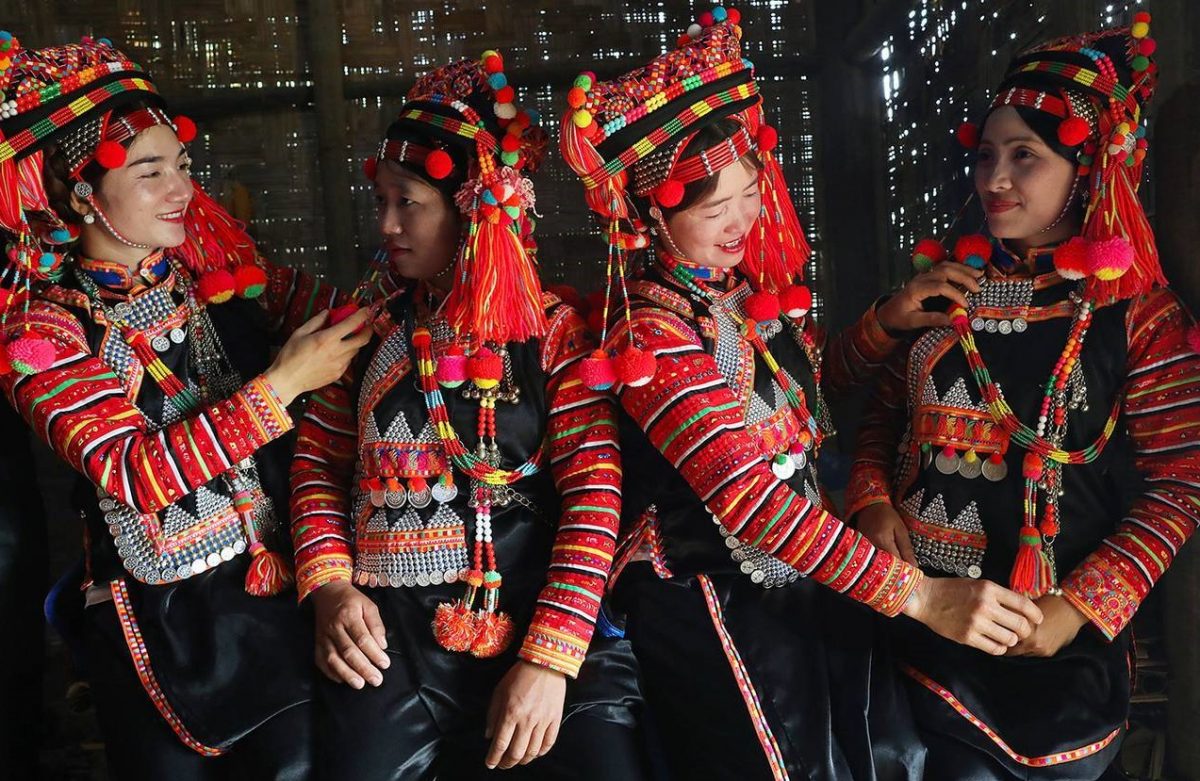Ban Gioc Waterfall
07/05/2024Bản Giốc Waterfall (Vietnamese : Thác Bản Giốc) is a collective name for two waterfalls on the Quây Sơn River that straddle the international border between China and Vietnam. Specifically located between the Karst hills of Daxin County, Guangxi and Trùng Khánh District, Cao Bằng Province. The waterfalls are located 350 km north of Hanoi. Ban Gioc waterfall is the largest and most beautiful waterfall in Vietnam.
Ban Gioc Waterfalls comprises two distinct falls. The main waterfall in the north is about 100 meters wide and 70 meters tall, featuring 3 cascades. One side of the fall is in China and other is in Vietnam. The water volume varies considerably between the dry and rainy seasons.When viewed from a distance, it resembles delicate ribbons of white silk gracefully draping the hill’s contours. This part constitutes the most expansive and picturesque panorama of Thac Ban Gioc Waterfall Vietnam.
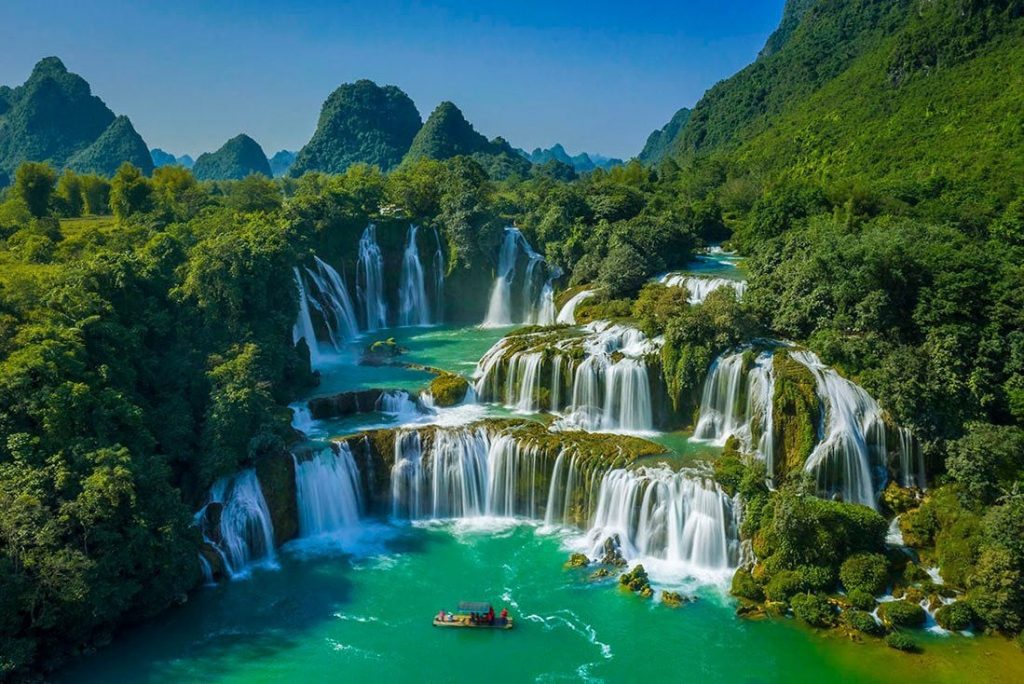
How to get to Ban Gioc Waterfalls?
If are not based in Hanoi, please take a flight to Hanoi capital to proceed further. It often takes 7 hours from Hanoi to arrive in Cao Bang City, then from Cao Bang to Ban Gioc waterfalls is 80km. From Hanoi to Ban Gioc, you can take car motorbike, bus, or private car/ van.
1. By car or motorbike: The journey takes around 6 to 7 hours, depending on traffic and road conditions. The route is scenic, but the roads can be narrow and curvy, so drive carefully.
2. By bus: Another option is to take a bus from Hanoi to Cao Bang, then take a taxi or rent a motorbike to get to the waterfall.
3. By booking a Ban Gioc Waterfall tour from Hanoi: The tours to Ban Gioc Waterfalls Vietnam. These tours usually include transportation, meals, and guided visits around the area. Hanoi – Bang Gioc Waterfall Tour – 2 Days/ 1 Night
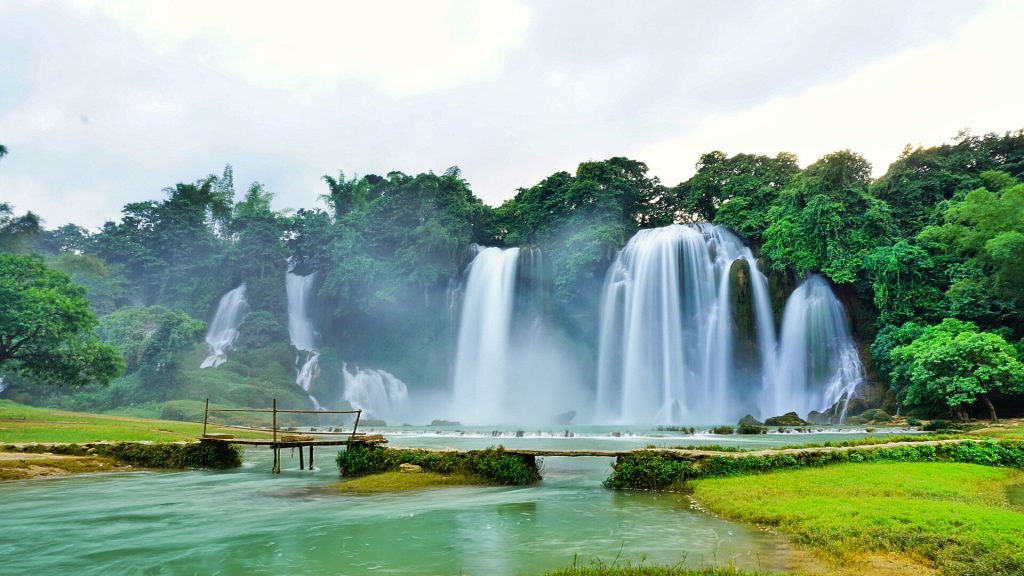
When is the best time to visit Ban Gioc Waterfall?
The best time to visit Ban Gioc Waterfalls is the rainy season between May and September, when Ban Gioc Waterfalls is at its most impressive. The increased precipitation leads to the waterfall expanding and the water pouring, resulting in a striking exhibition of nature’s grandeur. However, heavy downpours might make traveling challenging, especially if you go by motorbike or trekking. Thus, it is essential to check Cao Bang’s weather in advance.
– In the dry season (from November to April), the waters calm down. The visitor can walk along the paths of 300m wide falls. The small boats can take you to near the other bank of Vietnam.
– In the rainy season (from May to October) is the best time to visit Bang Gioc Waterfall. There are so much water rushes down from the Quay Son River. Dropping from the height of 70 meters, the waterfall then divides into three smaller falls by rocks and trees. The cool atmosphere of the dense water will bring you to the paradise of relaxing and fresh atmosphere.
Going to visit Ban Gioc Waterfall, you will have opportunity to experience daily life and culture of many ethnic minority communities here such as Tay, Nung, Dzao, H’mong an the some other famous sights as:
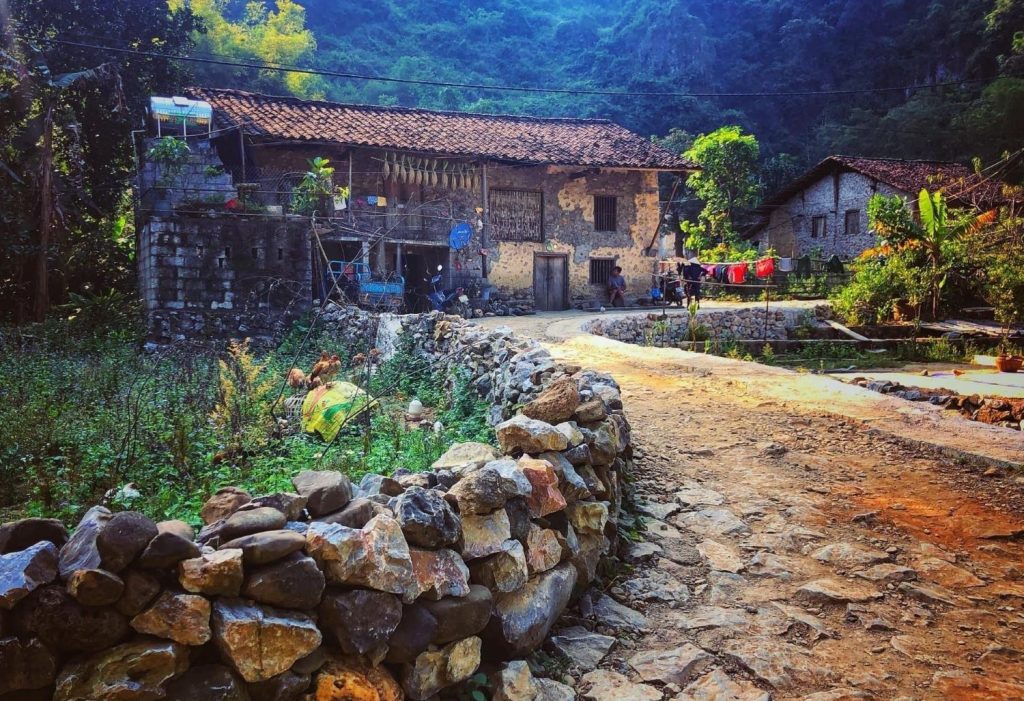
Things to do in Ban Gioc Waterfall
1. Enjoy amazing sightseeing from a bamboo boat
Taking a bamboo raft and getting a closer look at Ban Gioc Waterfall. It is a fun and interesting experience that immerses you in nature. As you approach the waterfall, you’ll feel the misty spray on your face and hear the sound of gushing water. The lush greenery surrounding the waterfall creates a serene atmosphere that fully allows you to appreciate the area’s natural beauty.
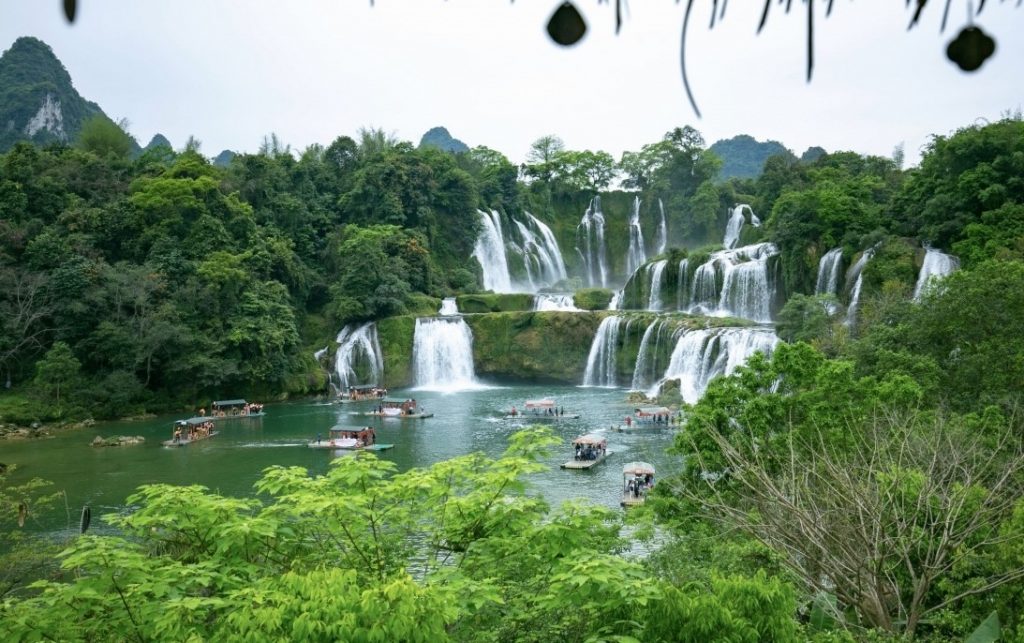
2. Enjoy countryside’s peaceful landscape and atmosphere
As you go along Quay Son River before reaching Ban Gioc waterfall, unfold before your eyes is the landscape of a rural region in northeastern Vietnam. The gentle landscape of the valley, dotted with limestone hills evokes a warm feeling in the heart of tourists like many other sceneries in North Vietnam.
Here and there are the rice fields and if you come during harvest season, you can see the delicious golden color of them promising a warmer winter for a people here. On the river, you can see the water wheel which is a common farming technique that still remain in this region. This device takes the water on the river and carries to the level of the fields and channels the water to irrigate the crops. It’s a peaceful and humbling sight to see.
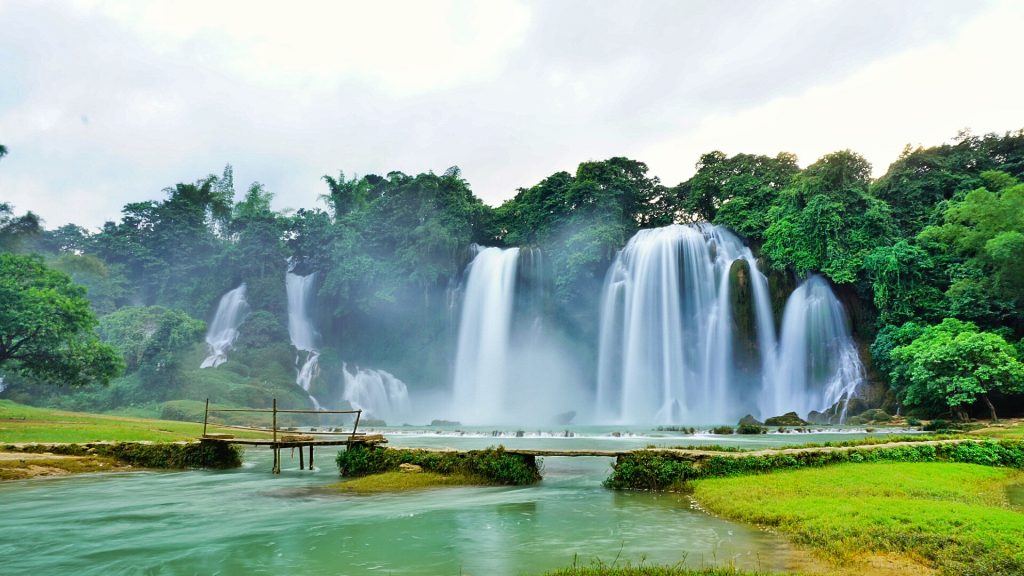
3. Immerse in Then Music – A Culture Heritage of Tay ethnic
When coming to Ban Gioc Waterfall, visitors have the opportunity to experience the enchanting sounds of Then Music performed by small groups along the pathway leading to the majestic waterfall. This is a traditional music form that originated in the Cao Bang province of Vietnam. It is an integral part of the cultural heritage of the Tay ethnic group in the region.
However, this small performance is not always available here. If visit the waterfall during the seasons when it flows (the best is between August and September), you will have a chance to witness this wonderful performance. They serve for free and you can tips for roadside artists if you like.
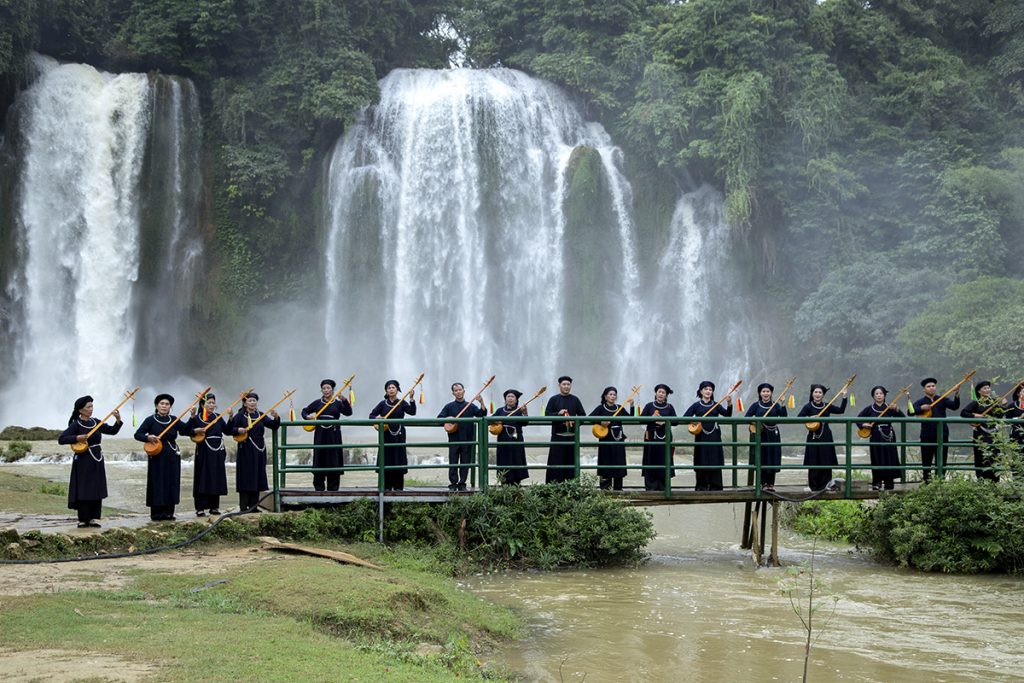
4. Explore Nguom Ngao Cave
The cave is located in Gun village, Dam Thuy Commune, Trung Khanh District, just 3 kilometers from Ban Gioc Waterfall. Discovered in 1921 by local people, the cave was opened for tourism purpose since 1996. Nguom Ngao Cave is one of the most spectacular cave systems with masterpiece in stone. It is locaved in the northern mountain province of Cao Bang. Created by an underground river, it extends for several kilometres underground, and villagers sheltered here during the 1979 war with China.
Nguom Ngao means “tiger’s cave” in the language of the local Tay ethnic minority. It is said that a long time ago, many fierce tigers sheltered in the cave and would enter the nearby village to hunt for livestock and even humans.
Nguom Ngao is a really amazing cave, huge and attractive with various shaped stalactites. Visiting the cave, you will be captivated by its wild beauty. Entry into the cave, you can feel the fresh, cool air from the natural mist inside. Nature has endowed the cave with stone formations that look like human beings, trees, plants and mythical animals.
The cave was formed due to weathered process of limestone mountains by wind and water over a long time. Stepping in the cavern, you seem to see a miraculous world. From high stone cliffs, hanging wonderful sparkling seven-colored stalactites. Along the way are stalactites of all shapes that look like boats, cactus, forests, terraced rice fields – a symbol of mountainous region of Vietnam and poles and valleys that are said to create a link between the earth and the heaven and a loving tie between men and women.
It’s recommended that you should take a visit to this cave after admire the wonderful view of Ban Gioc.
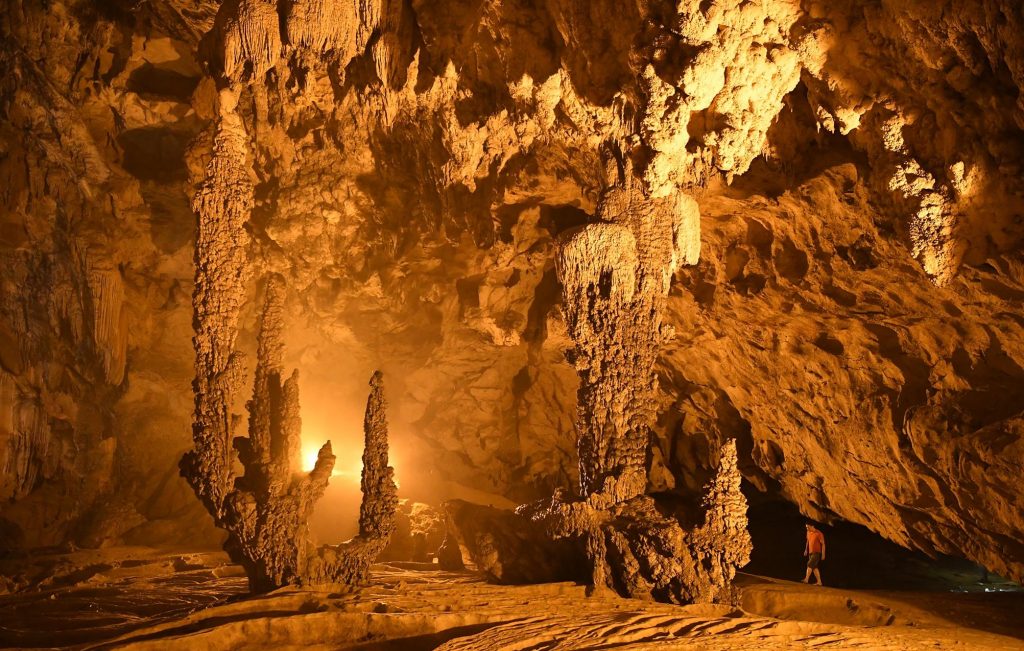
5. Phuc Sen Forging Village
Forging in Phuc Sen existed more than 1,000 years ago, in the form of hereditary to this day. Currently, there are about 150 family smiths, spread over 6 villages: Phia Chang above, Phia Chang below, Dau Co, Pac Rang, Tinh Dong and Lung Vai, forming the famous Phuc Sen forging village.
The special thing here is that the craftsmen only forge crafts, mainly based on their long experience, from selecting materials, how to temper steel, and applying specific secrets to create products. Such as knives. , scissors, hoes, sickles … of good quality, trusted and trusted by working people.
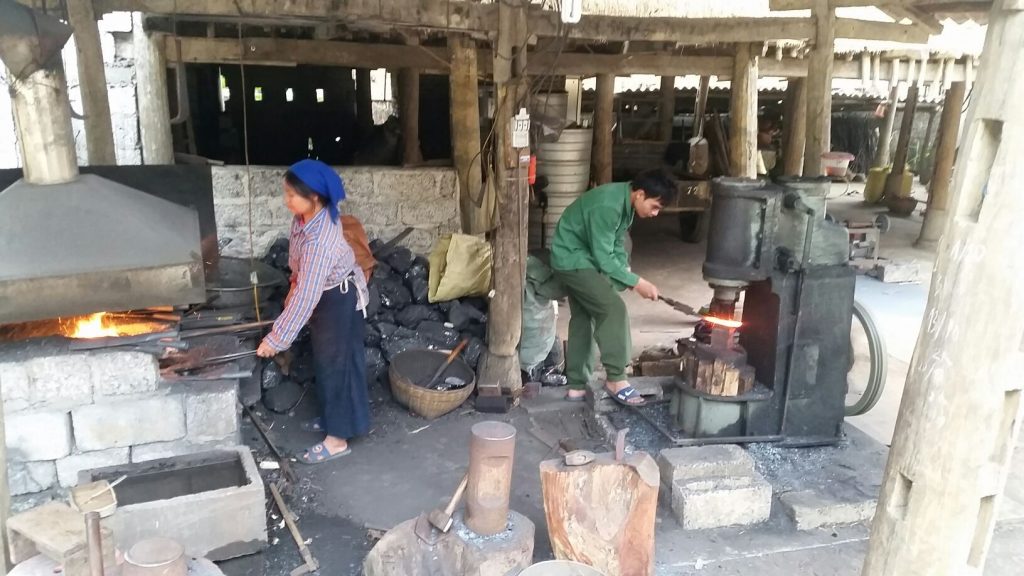
Everything you need to know about Vietnam

